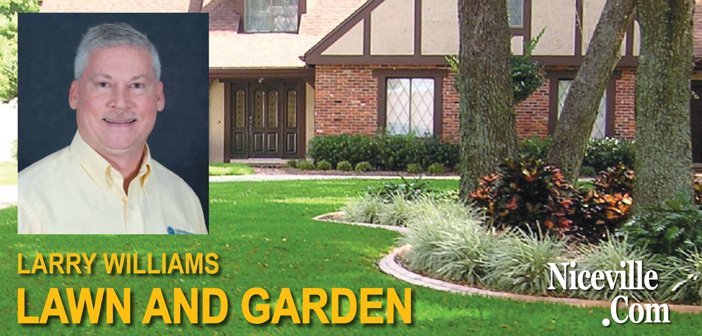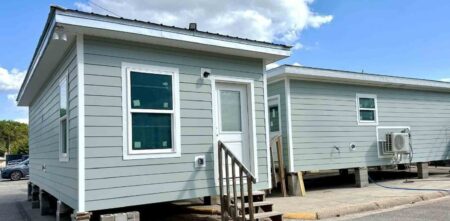Q. Under what circumstances does a lawn need to be aerated? When the best time to aerate and what is a recommended method?
A. Core aeration is done when the soil is compacted or where there are distinctly different textures of soil creating layers in the upper several inches of soil. The compaction problem can occur over time (usually years in a home lawn) from foot traffic, mowing equipment, vehicles parking on lawn, etc. If it’s difficult to push a screwdriver several inches into the soil, this can indicate a compaction problem. You can determine if there are different layers of different textures (examples: one layer of sand, one layer of clay, one layer of organic material, etc.) by taking a shovel and cutting out a vertical slice of soil to a depth of six to eight inches and then looking at the cross section to see if there is evidence of layers with distinctly different textures. With either test, it’s best to check
several areas of the lawn. Soil compaction is the most common reason for having to aerate but compaction usually takesIf it’s difficult to push a screwdriver several inches into the soil, this can indicate a compaction problem. You can determine if there are different layers of different textures (examples: one layer of sand, one layer of clay, one layer of organic material, etc.) by taking a shovel and cutting out a vertical slice of soil to a depth of six to eight inches and then looking at the cross section to see if there is evidence of layers with distinctly different textures. With either test, it’s best to check several areas of the lawn. Soil compaction is the most common reason for having to aerate but compaction usually takes
With either test, it’s best to check several areas of the lawn. Soil compaction is the most common reason for having to aerate but compaction usually takes time to develop. In either case, aeration is done to help increase air and water movement into the soil.
When needed, it’s best to use an aerator that takes out plugs of soil instead of one that has solid spikes that just pokes holes in the ground. The best time to aerate is when the lawn is actively growing but not when it’s under stress from hot or dry weather.
The best window of opportunity to aerate is mid-April to Mid-June.
Q. What can I do to deal with a thatch problem in my lawn?
A. Many times, what people are calling thatch is really not thatch – it’s just dead leaves on the soil surface. True thatch cannot easily be removed. It is a layer of dead and, in some cases, living plant debris (mainly dead grass stems, runners and roots). It is a layer that builds up over time under the grass and above the soil. It forms a layer that looks somewhat like peat moss.
Dead leaf blades do not contribute to this thatch layer. They simply break down too fast. A brisk raking will remove the dead grass blades that are intermingled in the grass.
In order to remove thatch, you have to use a vertical mower (dethatcher). Or, some people will top dress the lawn to help more quickly breakdown the thatch. If the thatch layer becomes too thick, it can cause some problems in a lawn.
The main causes for a thatch problem is fertilizing too much, watering too much and sometimes overusing fungicides. Basically, the grass is being grown faster than the microorganisms can breakdown the debris.
This UF/IFAS Extension link provides more info on thatch: http://gardeningsolutions.ifas.ufl.edu/lawns/problems-and-solutions/thatch.html
Larry Williams is the Extension horticulture agent with the Okaloosa County Cooperative Extension Service, University of Florida. Contact Larry at 689-5850 or email lwilliams@co.okaloosa.fl.us.









